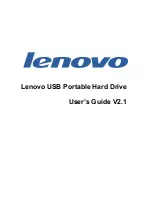
EonStor U16U Installation and Hardware Reference Manual
2-2
Installation Pre-requisites
2.2. Installation
Pre-requisites
1.
Static Free Installation Environment
– The ES subsystem must be installed in a
static free environment to minimize the possibility of electrostatic discharge (ESD)
damage. (See
Section 2.3.3
).
2.
Component Check –
Before the ES subsystem is installed, users should, during the
unpacking process, check to see that they have received all the required components.
(See
Section 2.5
)
3.
Memory Modules
– If the users wish to change the pre-installed memory modules,
the separately purchased modules must be installed by the end user. (See
Section
2.6.1
)
4.
Hard drives –
SCSI-320 hard drives must be purchased separately prior to
installation of the ES subsystem. (See
Section 2.10.2
and
Section 2.10.3
)
5.
Cabling
– All the SCSI cables that are used to connect the ES subsystem to the host
and used for the expansion port must be purchased separately. (See
Section 4.2.1
)
2.3. Safety
Precautions
2.3.1 General
Considerations
♦
Power Source
- Make sure power source is within the correct power range prior to
power on.
♦
Notices
- Under some circumstances, for instance, when there is an unused drive
bay, fix an empty drive tray to an empty slot. Leaving a slot open will seriously
affect the efficiency of airflow within the enclosure, and will consequently lead to
system overheating.
♦
Faulty Modules
- Leave a faulty module in place until you have a replacement unit
and you are ready to replace it.
♦
Subsystem Weight
- A subsystem can weigh up to 24 kilograms with disk drives.
Two people will be required to install or relocate the subsystem. Drives should be
removed from the enclosure before moving the subsystem.
♦
Airflow Consideration
- The subsystem requires an airflow clearance especially on
the front and the rear. A minimum of 2.5cm is required between the front of the
enclosure and rack cover. A minimum of 5cm is required from the enclosure to the
end of rack for proper ventilation.















































